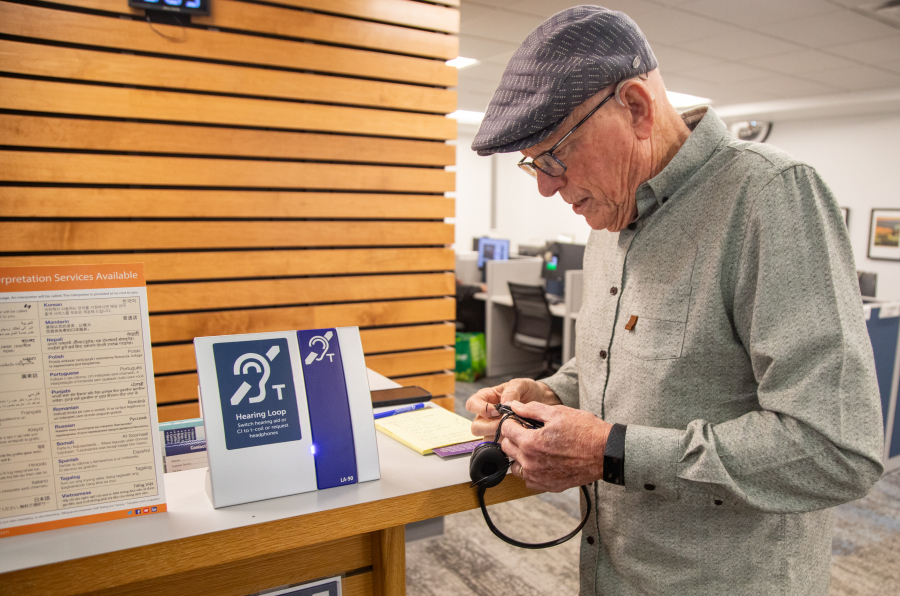For thousands of Bellingham area residents who are hard of hearing, added technology is making various public spaces more welcoming.
Loops, also known as an Audio Frequency Induction Loop System (AFILS), can connect directly with individual hearing aids, making sounds crystal-clear for hard-of-hearing people.
Bellingham establishments are starting to use them along with small countertop loops placed at each branch of the local library, the Whatcom Museum, City Hall and several other city facilities.
Those loops allow more residents and visitors to easily participate in public life.
“The city has made a really big effort in trying to be more welcoming to all members of the community,” said Michelle Becker, the supervisor of public services at the Bellingham Public Library. “I think pretty much all city buildings now have the loop.”
Other facilities, including the Lincoln Theatre in Mount Vernon and one of the San Juan Cruises tour boats, have also added loops for hard-of-hearing visitors.
“We’ve put them into our public-facing departments,” said Holly Pederson, the city’s Americans with Disabilities Act (ADA) coordinator. “The county hearing loops are a great way to provide that one-on-one interaction, and if this could be incorporated in more [places], it would just make it better for people.”
Loops, which consist of a special amplifier and a hidden copper wire, transmit sounds through a magnetic field in a “looped” space — as small as a taxi cab or as large as a conference hall — to any hearing device equipped with a telecoil, or t-coil.
T-coils are small, and can be put in a vast majority of hearing aids. It’s an old technology, with the first one used in a hearing aid in 1937.
Loops came along soon after, and have been configured into homes and businesses across Whatcom County.
Dr. Neil Bauman, CEO of the Center for Hearing Loss Help, was born with severe hearing loss and looped his own home decades ago.
“I’ve been struggling to hear every day of my life,” Bauman said. “Being able to just switch on my t-coil and to hear clearly — there’s no words to describe it.”
Bauman is just one of an estimated 20,000 people in Whatcom County with hearing loss, according to the Hearing Loss Association of America (HLAA). Loops, the group said, can help all of them, even people with severe loss.
Bauman built his first loop back in 1971, and has since looped his home, his office and even his TVs. He and his wife — also hard of hearing — can sit side-by-side on the couch, watching side-by-side screens, without hearing the other’s shows, and without turning the volume all the way up on their devices.
“It’s a beautiful, clear sound,” he said.
Bauman has utilized loops outside of his home, too. He was preparing to give a speech at a conference years ago when someone used a remote microphone linked to a loop to ask a question.
“It sounded so close,” he said. “It was just like they were talking in both ears at once, and that can never happen to a hard-of-hearing person like me.”
Loop costs
The counter loops are much cheaper (about $250 apiece) than standard loops, which require construction to place wiring inside walls or under carpets and floors. The counter loop is just a small block that can be placed on a desk or carried with a person throughout a facility.
Larry Wonnacott, the president of Whatcom County’s chapter of HLAA, called loops the “gold standard” of hearing technology: they’re simple to install, the counter system is cheap and accessible, and they work well.
“Loops make a space accessible to people with hearing loss,” Wonnacott said. “Whereas without it, it’s like having a flight of stairs for somebody with a wheelchair.”
Other tech, including infrared and FM radio transmitters, can serve the same purpose as loops, but don’t work quite as well over large areas.



